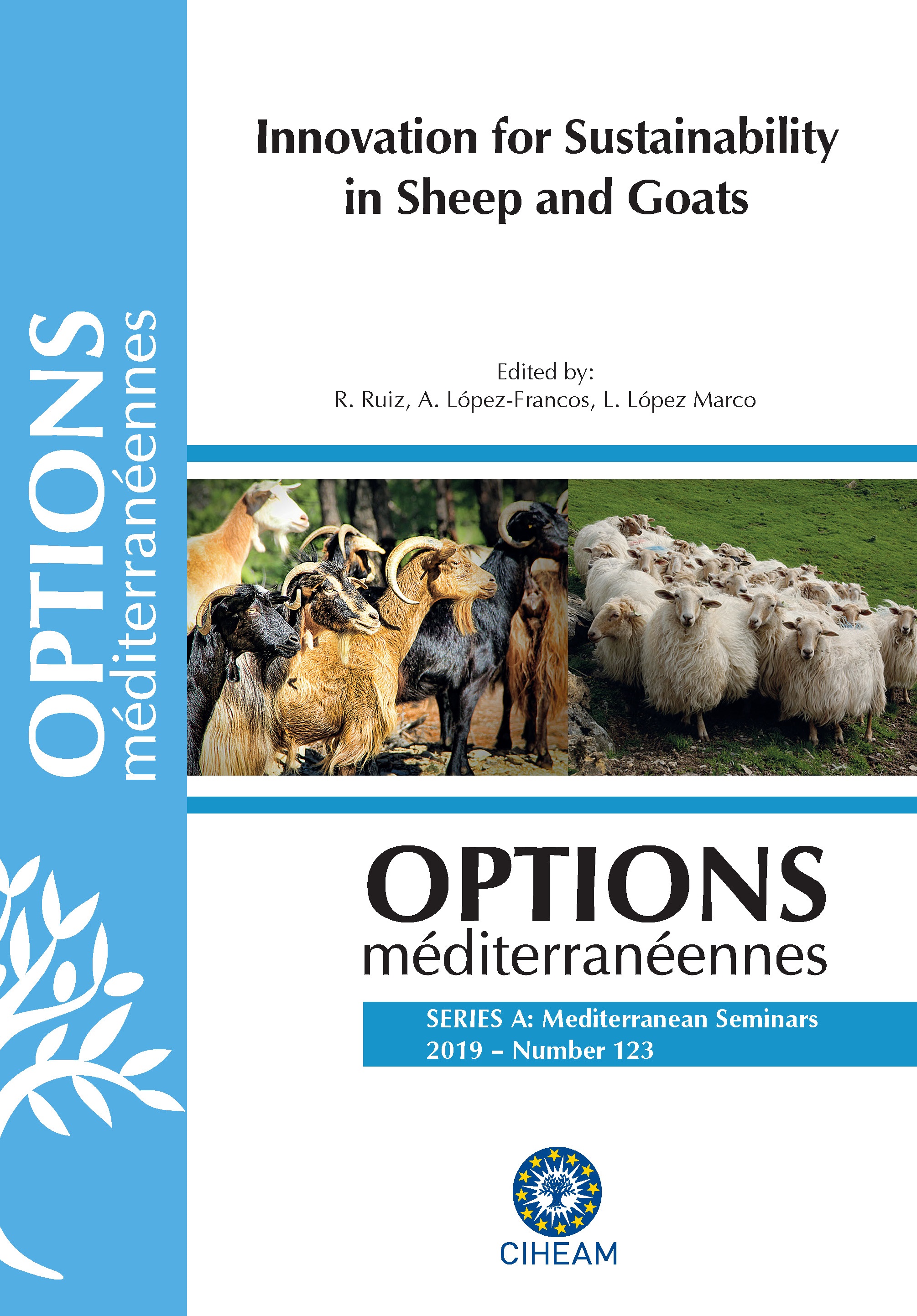| Article précédent | p. 167-171 | Article suivant |
Effect of levels of intake on rumen fermentation, digestibility, methane emissions and behaviour
The objective of this experiment was to examine the effect of differing levels of intake on rumen fermentation profile, nutrient digestibility, methane emissions, and feeding behaviour in sheep. Six Aberdale cross Texel ewes (90.2 ± 1.89 kg BW) fitted with rumen fistula were used in a duplicated 3×3 Latin Square with three 21-d experimental periods. Treatments comprised dried grass nuts fed to meet one (1M), 1.5 times (1.5M), or two times (2M) maintenance energy requirements (NRC, 2007). The average daily gain was greater in 2M than 1M ewes. The 1M ewes had a lower VFA concentration than 1.5M and 2M, and a greater aceticto-propionic ratio than 1.5M. The ammonia concentration was greater in 1.5M than in 2M ewes. Dry and organic matter digestibility per unit of metabolic weight were greater in 1M than 1.5M and 2M ewes. Emissions of methane per unit of DM intake were greater in 1M than 1.5M and 2M ewes. No differences were found in protozoa count, feeding behaviour or haematology. Results show that increased levels of intake have a measureable impact on diet fermentation and digestibility, reducing the acetate-to-propionate ratio, ammonia production, digestibility rate, and methane emissions. These changes could be attributed to the different nutrient fermentation pattern and the higher flow rate from the rumen to the lower digestive tract.
L’objectif de cette étude était d’examiner l’impact de différents niveaux d’ingérés sur le profil de fermentation du rumen, la digestibilité, la production de méthane et les comportements alimentaires chez les moutons. Six brebis croisées Texel-Aberdale (90,2 ± 1,89 kg poids moyen) canulées ont été utilisées dans un carré latin double 3 × 3 de trois périodes expérimentales de 21 jours. Les traitements consistaient en différentes quantités de granulés d’herbe afin de répondre à une fois (1M), 1 fois et demi (1,5M), ou deux fois (2M) aux besoins énergétiques (NRC, 2007). Le gain de poids moyen journalier était plus important chez les brebis 2 M que les 1M. Les brebis 1M avaient une concentration en AGV inférieure aux 1,5 M et 2 M, et un rapport acétique-propionique plus élevé que 1,5 M. La concentration d’ammoniaque était supérieure chez les brebis 1,5M que chez les brebis 2M. La digestibilité des matières sèches et organiques par unité de poids était plus élevée chez les brebis 1M que 1,5M et 2M. La production de méthane par unité de matières sèches ingérées était plus importante chez les brebis 1M. Aucune différence n’a été trouvée sur le nombre de protozoaires, le comportement alimentaire ou les paramètres hématologiques. Ces résultats montrent qu’une augmentation de l’ingéré a un impact quantifiable sur la fermentation et la digestibilité en réduisant le ratio acétate-propionate, la production d’ammoniaque, le taux de digestibilité et la production de méthane. Ces changements pourraient être attribués aux différentes voies de fermentation utilisées et à un transit plus élevé du rumen vers le tractus digestif inférieur.
- [ Afficher ]
- [ Télécharger ]
- [ Exporter la citation ]
Vous pouvez télécharger la citation au format :
- [ Imprimer ]
-
Mots-clés
COMPORTEMENT ALIMENTAIRE, DIGESTIBILITE, FERMENTATION DU RUMEN, METHANECiter cet article
Moya D., Newbold C.J. Effect of levels of intake on rumen fermentation, digestibility, methane emissions and behaviour. In : Ruiz R. (ed.), López-Francos A. (ed.), López Marco L. (ed.). Innovation for sustainability in sheep and goats. Zaragoza : CIHEAM, 2019. p. 167-171. (Options Méditerranéennes : Série A. Séminaires Méditerranéens; n. 123). 2. Joint Seminar of the Subnetworks on Nutrition and on Production Systems of the FAO-CIHEAM Network for Research and Development in Sheep and Goats, 2017/10/03-05, Vitoria-Gasteiz (Spain). http://om.ciheam.org/om/pdf/a123/00007879.pdf



